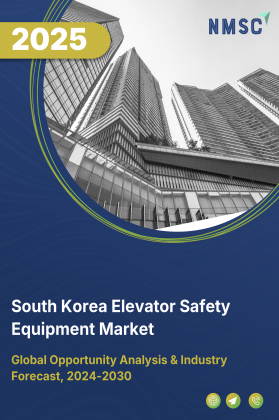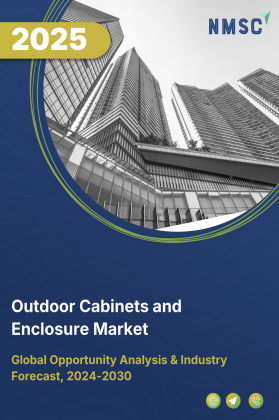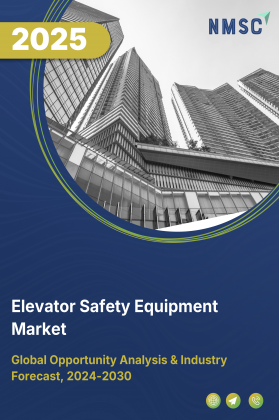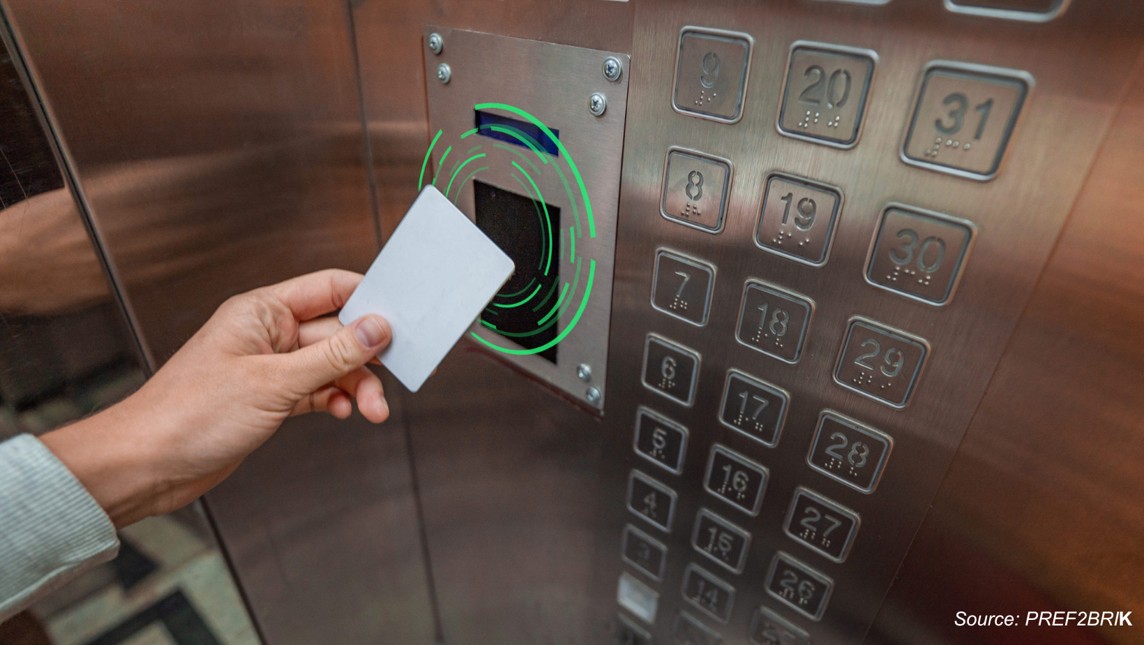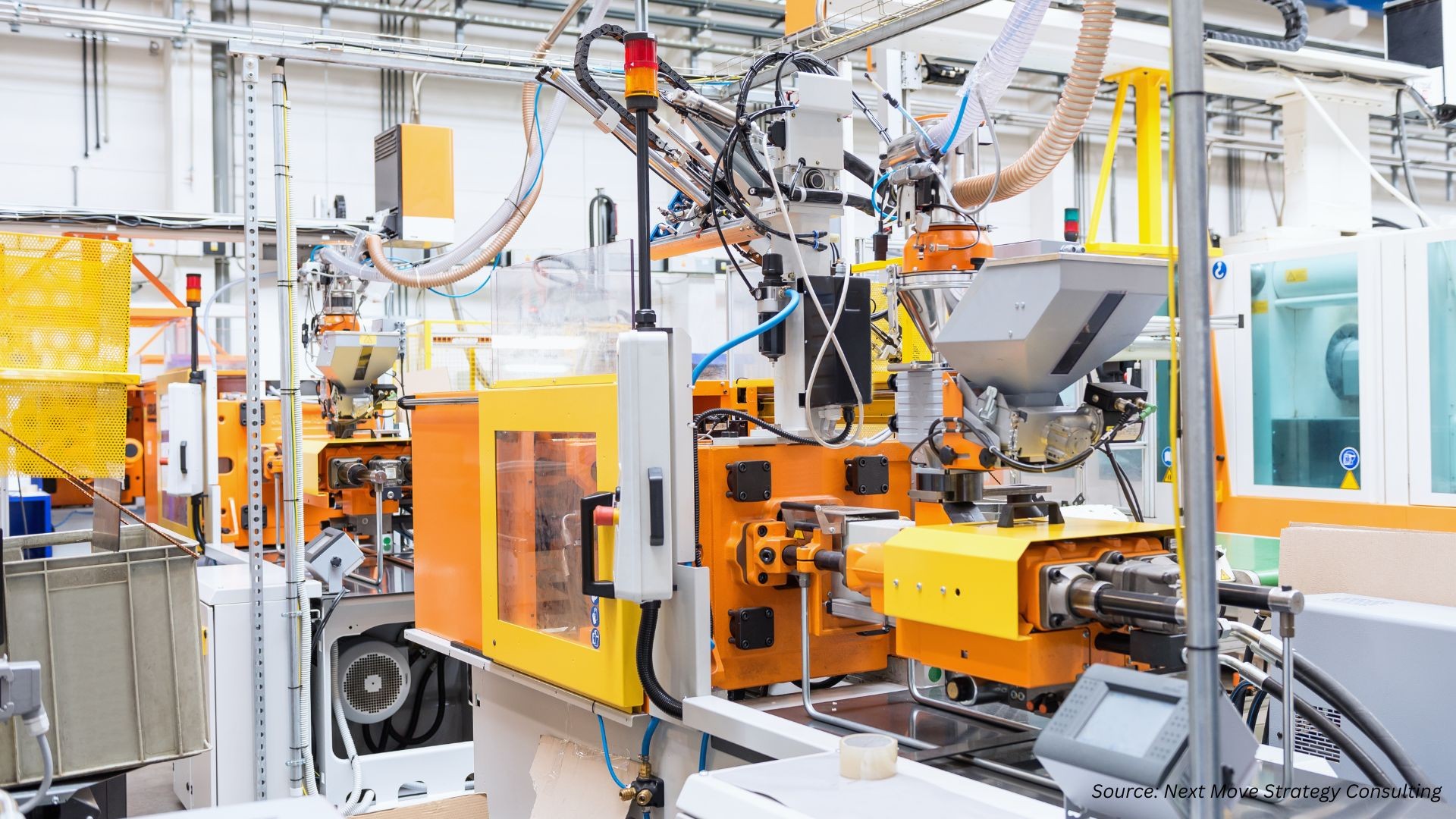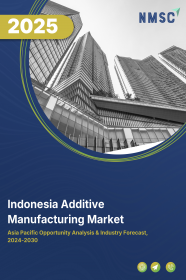
Indonesia Additive Manufacturing Market by Offering (Printers, Materials, Software, and Services), by Technology (Fused Deposition Modelling (FDM), Stereolithography (SLA), Selective Laser Sintering (SLS), Polyjet Printing/Multijet Printing (MJP), Electron Beam Melting (EBM), Digital Light Processing (DLP), Direct Metal Laser Sintering (DMLS), and Other Technologies), and Others – Opportunity Analysis and Industry Forecast, 2024–2030
Industry: Construction & Manufacturing | Publish Date: 08-Oct-2025 | No of Pages: 173 | No. of Tables: 137 | No. of Figures: 82 | Format: PDF | Report Code : CM2819
Indonesia Additive Manufacturing Market Overview
Indonesia Additive Manufacturing Market size was valued at USD 186.9 million in 2023, and is predicted to reach USD 985.2 million by 2030, at a CAGR of 25.2% from 2024 to 2030. In terms of volume, the market size was 8 thousand units in 2023, and is projected to reach 52 thousand units by 2030, with a CAGR of 27.6% from 2024 to 2030.
The additive manufacturing (AM) market, known as additive layer manufacturing (ALM) or three-dimensional (3D) printing, is a global industry focused on developing, producing, and distributing technologies and materials for constructing three-dimensional objects layer by layer from digital models.
Serving diverse sectors including aerospace, automotive, healthcare, and consumer goods, this market offers advanced solutions for prototyping, production, and customized manufacturing.
AM is highly valued for its capability to produce intricate and customized components while minimizing material waste, leading to significant cost savings and environmental benefits. A notable characteristic of this market is its variety of printing technologies, such as stereolithography (SLA), selective laser sintering (SLS), and fused deposition modeling (FDM), each tailored to meet specific industry requirements and applications. Additionally, AM's ability for rapid prototyping accelerates product development cycles, empowering businesses to innovate and bring products to market faster than traditional manufacturing methods allow.
Rising Collaboration Among Key Players Boosts Indonesia Additive Manufacturing Market Growth
Collaborative efforts between government bodies, private enterprises, academic institutions, and research organizations are playing a vital role in accelerating the growth of the Indonesia additive manufacturing market. These partnerships are focused on developing localized capabilities, promoting innovation, and ensuring technology transfer across key industrial sectors. By fostering a cooperative ecosystem, Indonesia is creating an enabling environment for the widespread adoption of AM technologies.
Such collaboration is not only advancing technological capabilities but also building the foundation for knowledge sharing, skill development, and infrastructural support. These joint efforts contribute to strengthening Indonesia's position in advanced manufacturing and help bridge the gap between research and commercialization. As the pace of industrial modernization increases, such alliances will remain central to scaling additive manufacturing across the country.
Significant Growth of Indonesia's Healthcare Sector Accelerates Demand for Additive Manufacturing
Indonesia’s rapidly expanding healthcare industry is driving increased demand for personalized, efficient, and high-quality medical solutions. Additive manufacturing offers the flexibility and speed required to produce customized medical implants, prosthetics, surgical guides, and dental devices. This aligns with the sector’s growing emphasis on patient-specific care and advanced treatment planning.
With a sharp increase in domestic medical device production and exports in recent years, the healthcare sector is becoming one of the most dynamic areas of growth in the country. The application of AM technologies in this industry enables shorter production cycles, reduced inventory needs, and greater design freedom—factors that are proving essential in meeting the evolving healthcare demands of Indonesia’s population.
High Upfront Investment Restrains Indonesia Additive Manufacturing Market Growt h
Despite its potential, the Indonesia additive manufacturing market faces challenges due to high initial investment requirements. The cost of acquiring AM equipment, advanced materials, and software solutions can be substantial, particularly for small and medium enterprises. Additionally, the need for skilled professionals and specialized training adds to the capital burden, limiting accessibility for many businesses.
These financial constraints are slowing the adoption of AM technologies in certain industries and regions within Indonesia. While larger enterprises may have the resources to implement these systems, smaller manufacturers remain cautious due to the long payback periods and unpredictable return on investment. Addressing these cost barriers through financial incentives or shared infrastructure models will be critical to ensuring broader market participation.
Integration of Artificial Intelligence Offers New Opportunities for Indonesia Additive Manufacturing Market
The integration of artificial intelligence (AI) with additive manufacturing in Indonesia presents promising opportunities to enhance efficiency, accuracy, and scalability. AI-powered systems can analyze real-time data from the printing process—such as temperature, layer quality, and material behavior—to make immediate adjustments and improve overall output quality. This leads to reduced errors, minimal material wastage, and better predictability in production outcomes.
As Indonesia continues to embrace digital transformation, the convergence of AI and AM is expected to unlock new levels of innovation. By leveraging AI-driven automation, manufacturers can streamline design workflows, accelerate prototyping, and produce complex geometries with greater consistency. These advancements will play a key role in transitioning Indonesia’s manufacturing sector toward smarter, more sustainable, and high-performance production systems.
Competitive Landscape
The prominent key players operating in Indonesia additive manufacturing industry include Stratasys Ltd., HP Inc. (via PT HP Indonesia), EOS GmbH, 3D Systems Corporation, Materialise NV, Markforged, Inc., Formlabs, Inc., Desktop Metal, Inc., PT Dirgantara Indonesia (Persero), PT Rekayasa Industri (“Rekind”), PT Indoteknik Global Mandiri, PT Sinar Surya Cemerlang, PT Tiga Dimensi Internusa, PT Bio 3D Printing Indonesia, PT Nusantara Turbin dan Propulsi (Persero) and others.
Indonesia Additive Manufacturing Market Key Segments
By Offering
-
Printers
-
Desktop Printers
-
Industrial Printers
-
-
Materials
-
Plastics
-
Thermoplastics
-
Photopolymers
-
-
Metals
-
Steel
-
Aluminum
-
Titanium
-
Nickel
-
Other metals
-
-
Ceramics
-
Other Materials
-
Wax
-
Laywood
-
Paper
-
Biocompatible materials
-
-
-
Software
-
Design
-
Inspection
-
Printing
-
Scanning
-
-
Services
By Technology
-
Fused Deposition Modelling (FDM)
-
Stereolithography (SLA)
-
Selective Laser Sintering (SLS)
-
Polyjet Printing/Multijet Printing (MJP)
-
Electron Beam Melting (EBM)
-
Digital Light Processing (DLP)
-
Direct Metal Laser Sintering (DMLS)
-
Other Technologies
By Process
-
Powder Bed Fusion (PBF)
-
Vat Photopolymerization
-
Binder Jetting
-
Material Extrusion
-
Material Jetting
-
Other Processes
By Appliaction
-
Prototyping
-
Tooling
-
Functional Part Manufacturing
By Vertical
-
Automotive
-
Aerospace & Defense
-
Healthcare
-
Architecture & Construction
-
Education
-
Industrial
-
Energy
-
Printed Electronics
-
Jewelry
-
Food & Culinary
-
Other Verticals
Key Players
-
Stratasys Ltd.
-
HP Inc. (via PT HP Indonesia)
-
EOS GmbH
-
3D Systems Corporation
-
Materialise NV
-
Markforged, Inc.
-
Formlabs, Inc.
-
Desktop Metal, Inc.
-
PT Dirgantara Indonesia (Persero)
-
PT Rekayasa Industri (“Rekind”)
-
PT Indoteknik Global Mandiri
-
PT Sinar Surya Cemerlang
-
PT Tiga Dimensi Internusa
-
PT Bio 3D Printing Indonesia
-
PT Nusantara Turbin dan Propulsi (Persero)
REPORT SCOPE AND SEGMENTATION:
|
Parameters |
Details |
|
Market Size Value in 2023 |
USD 186.9 million |
|
Revenue Forecast in 2030 |
USD 985.2 million |
|
Growth Rate |
CAGR 25.2% from 2024 to 2030 |
|
Market Volume in 2023 |
8 thousand units |
|
Market Forecast in 2030 |
52 thousand units |
|
Volume Growth Rate |
CAGR of 27.6% from 2024 to 2030 |
|
Analysis Period |
2023–2030 |
|
Base Year Considered |
2023 |
|
Forecast Period |
2024–2030 |
|
Market Size Estimation |
Million (USD) |
|
Growth Factors |
|
|
Companies Profiled |
10 |
|
Market Share |
Available for 10 companies |
|
Customization Scope |
Free customization (equivalent up to 80 working hours of analysts) after purchase. Addition or alteration to country, regional, and segment scope. |
|
Pricing and Purchase Options |
Avail customized purchase options to meet your exact research needs. |

















 Speak to Our Analyst
Speak to Our Analyst



